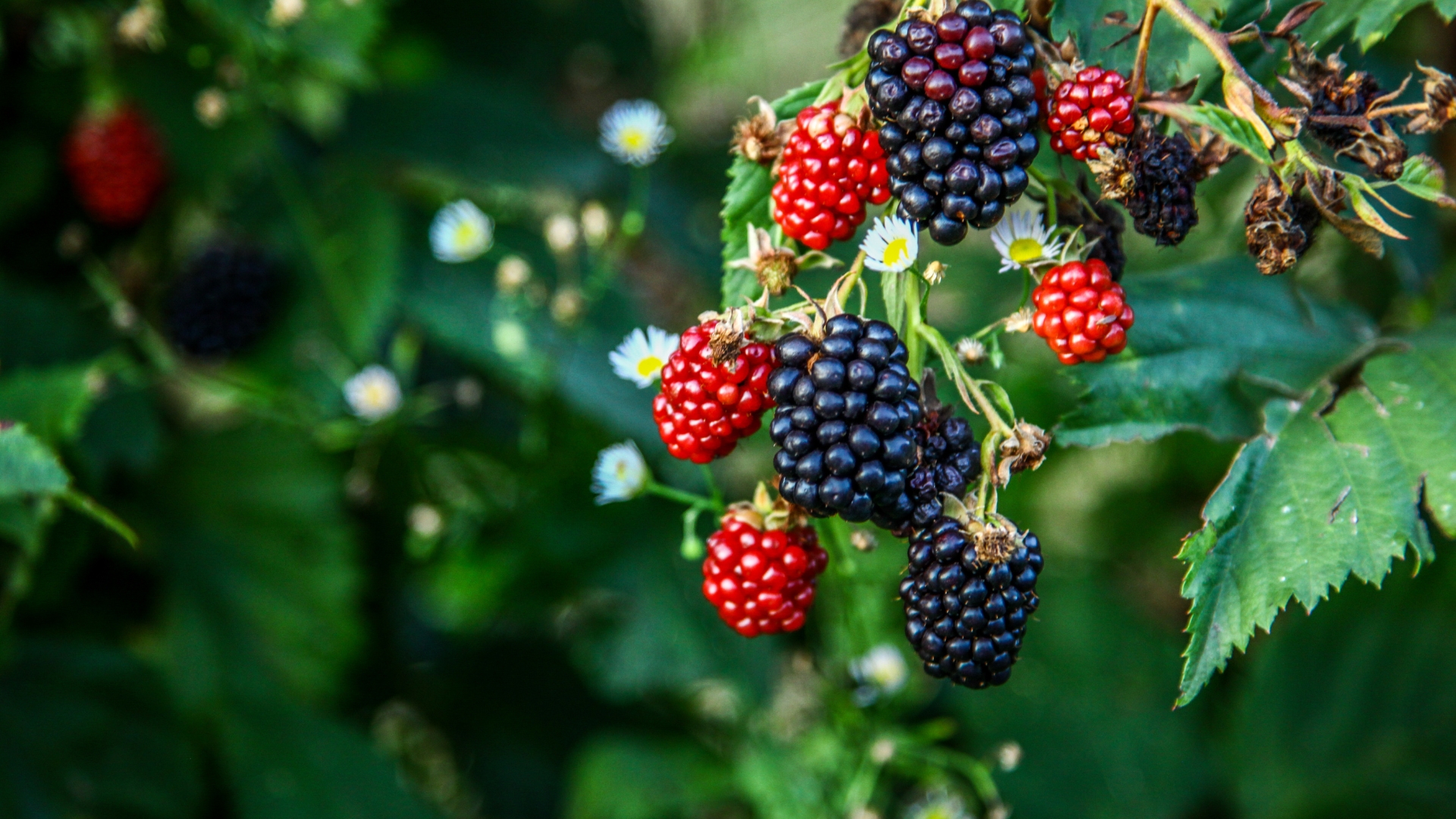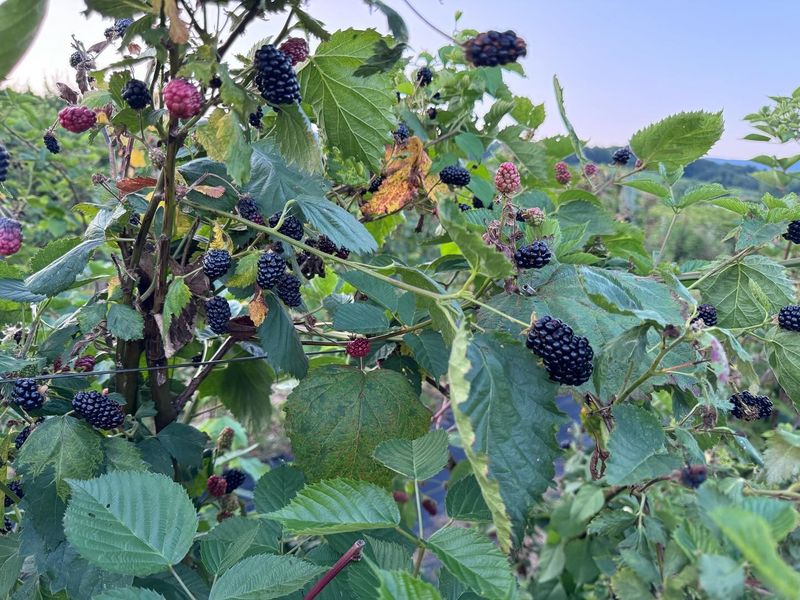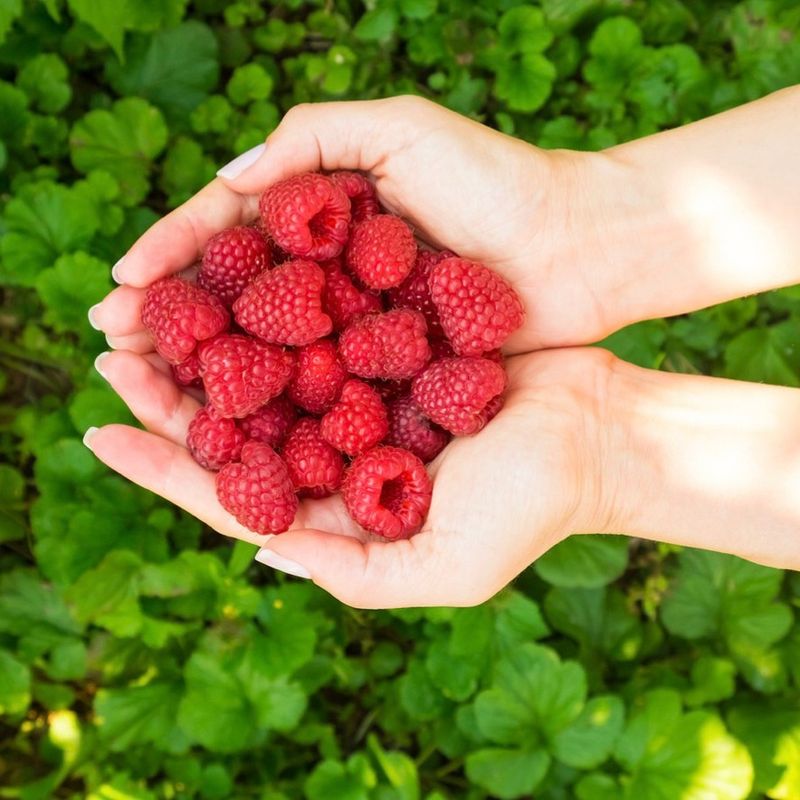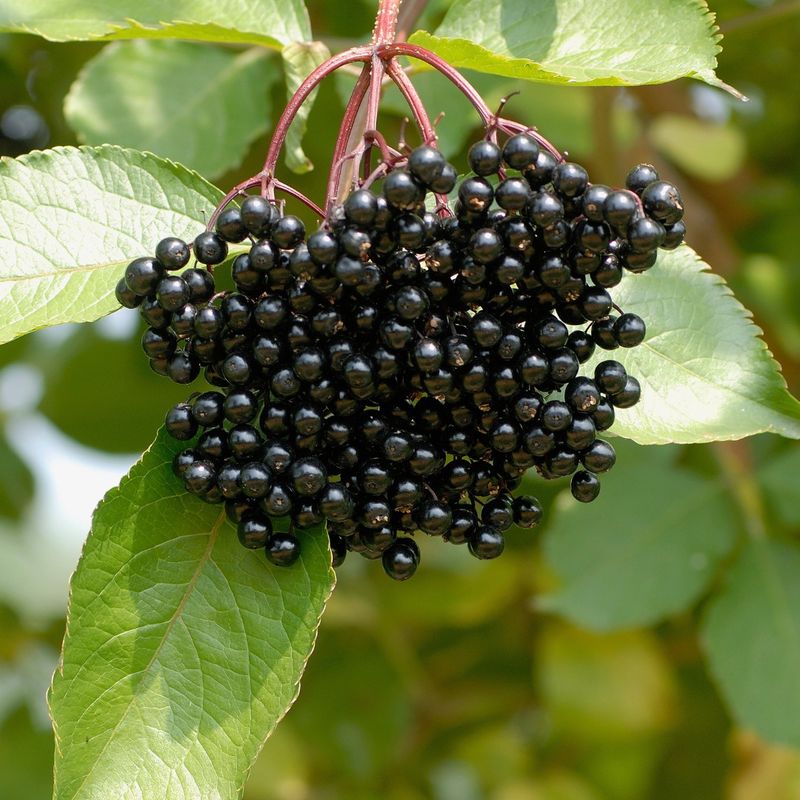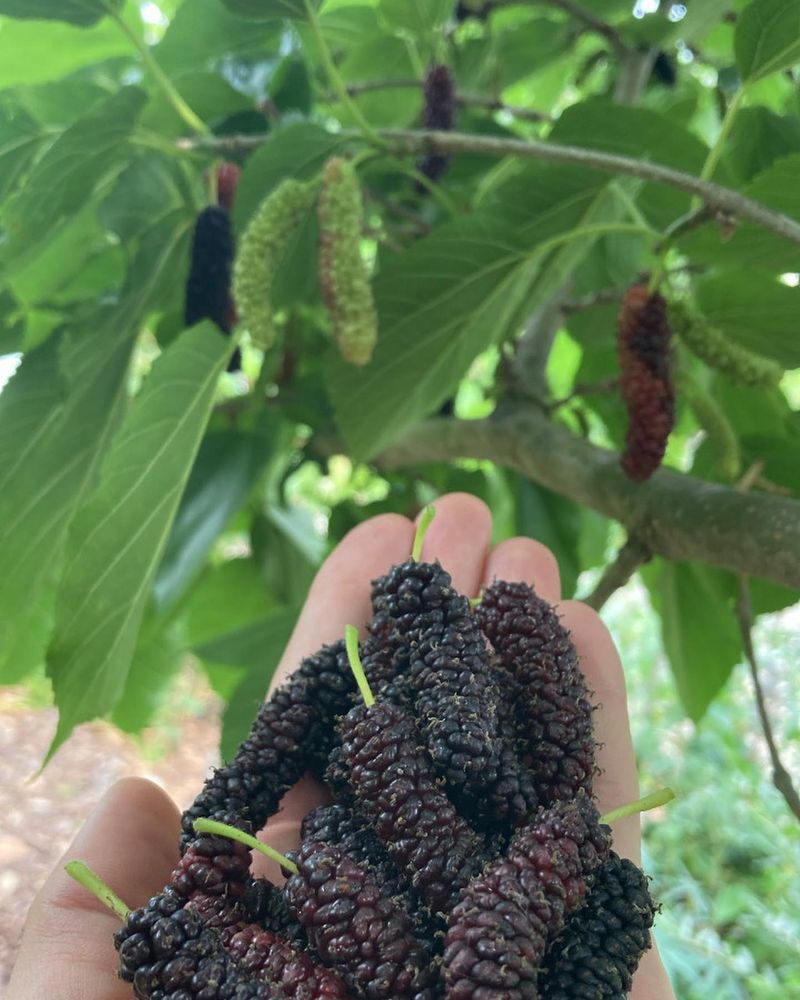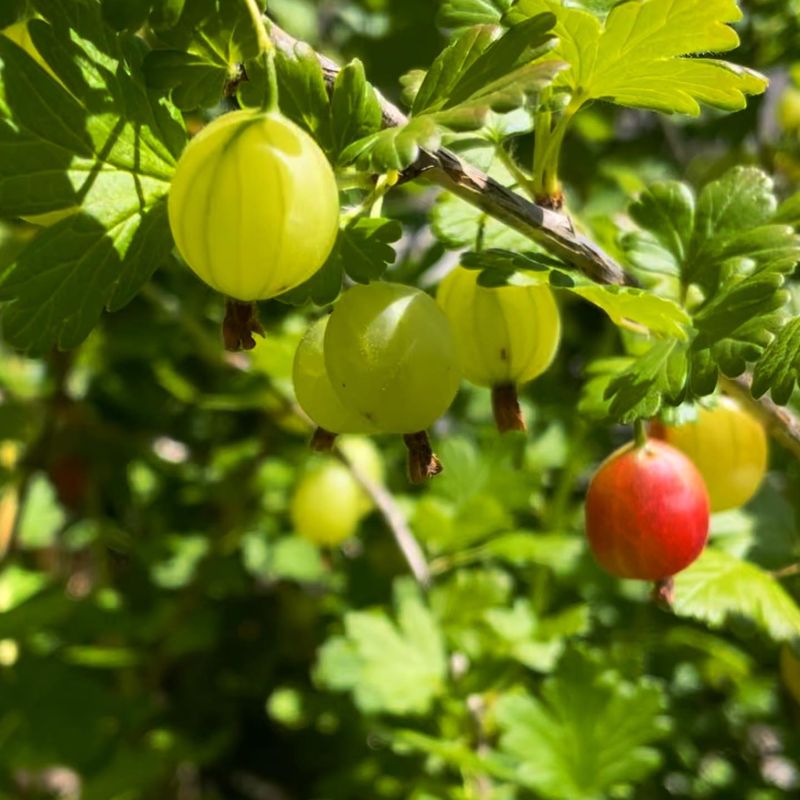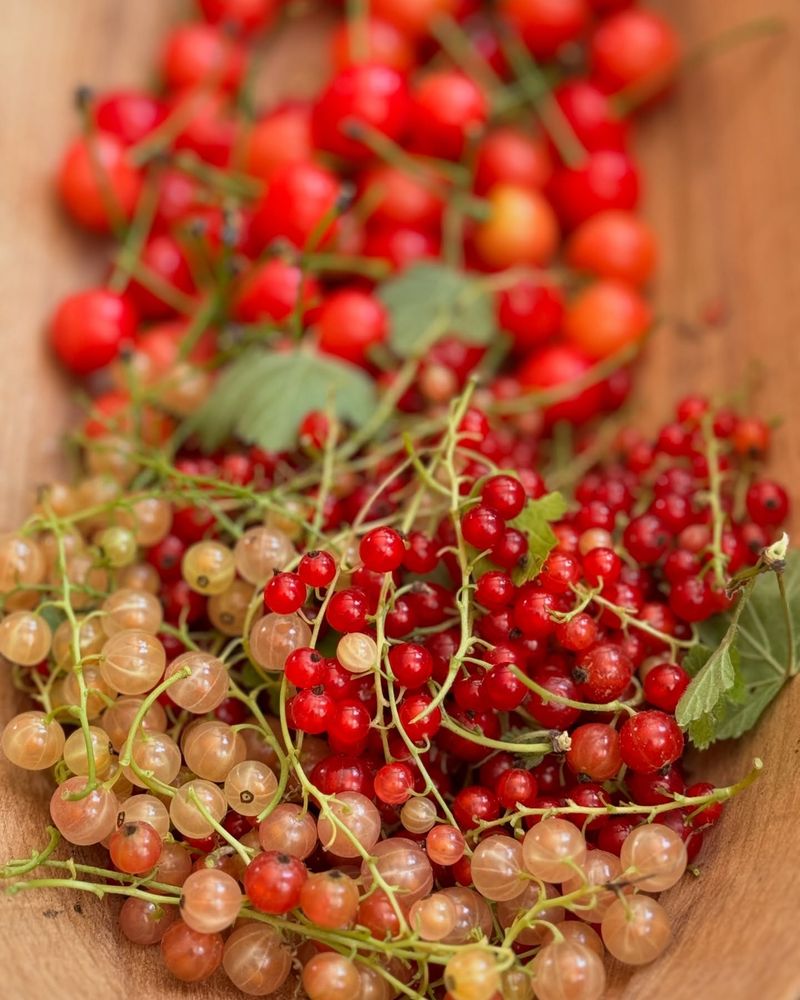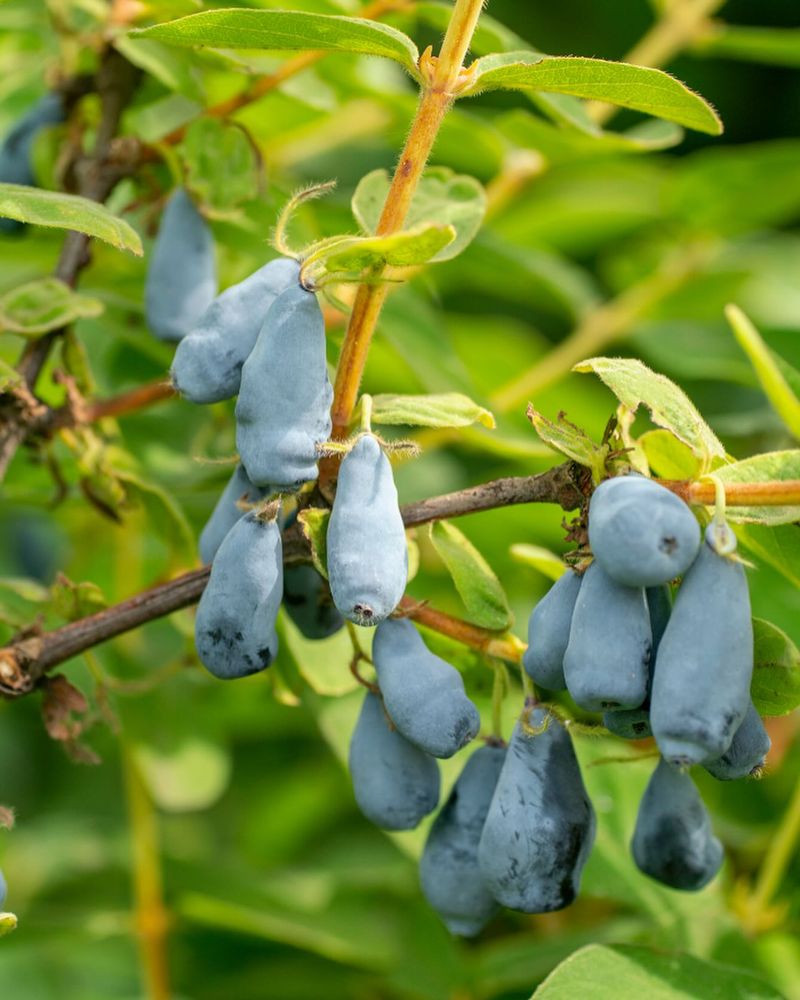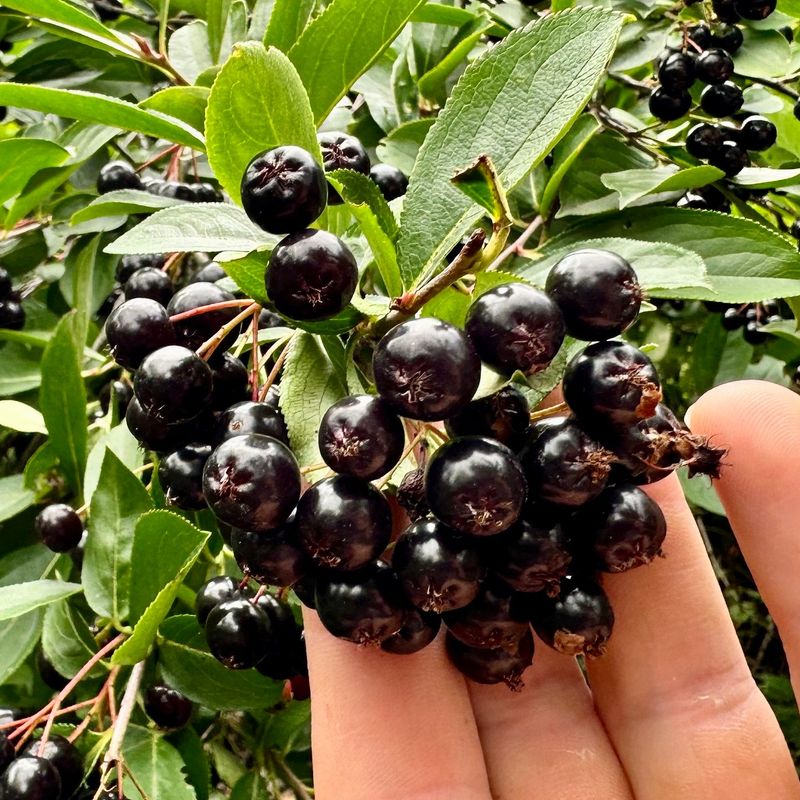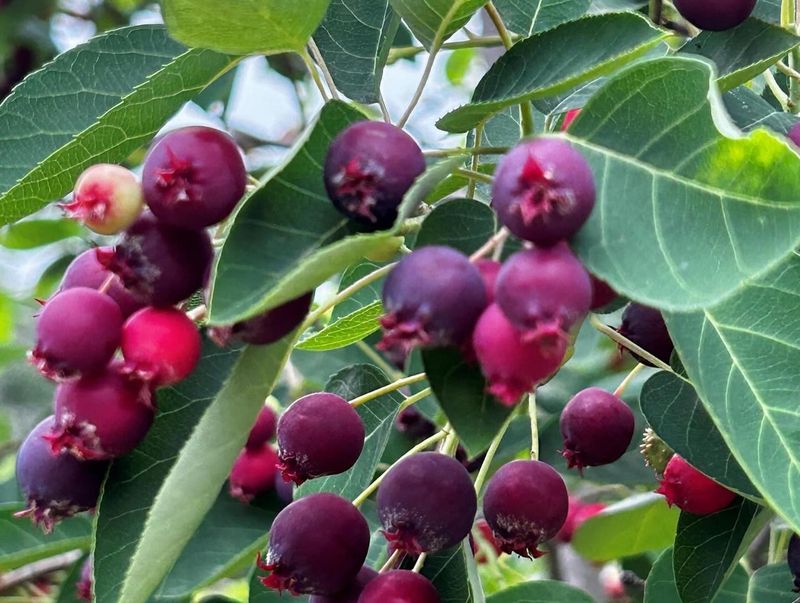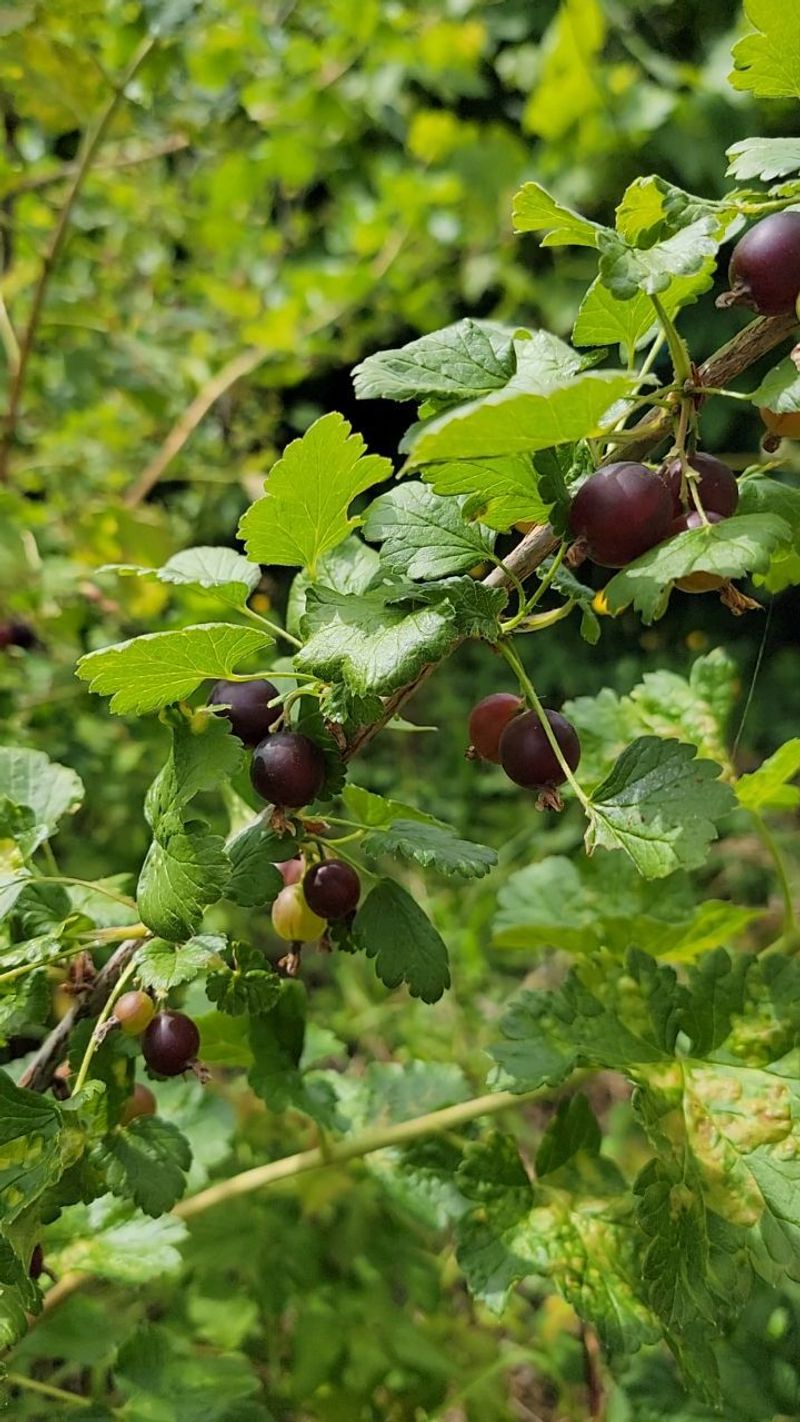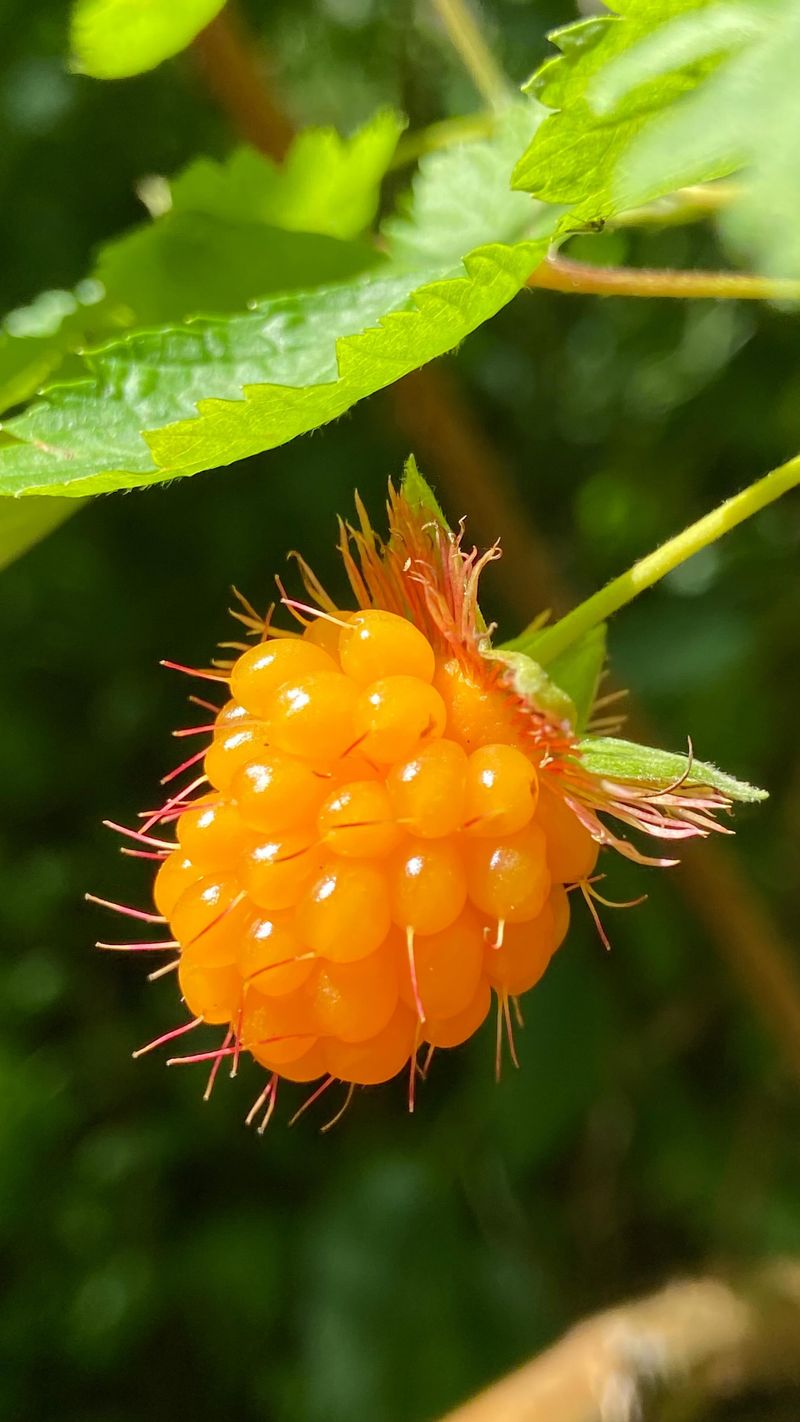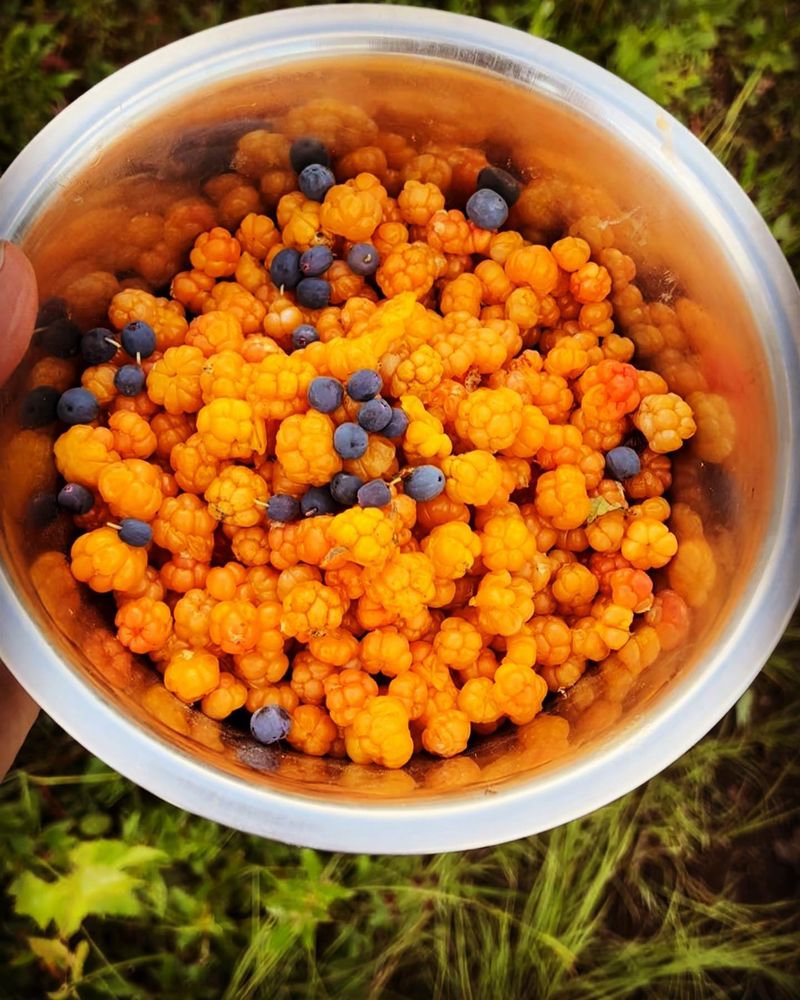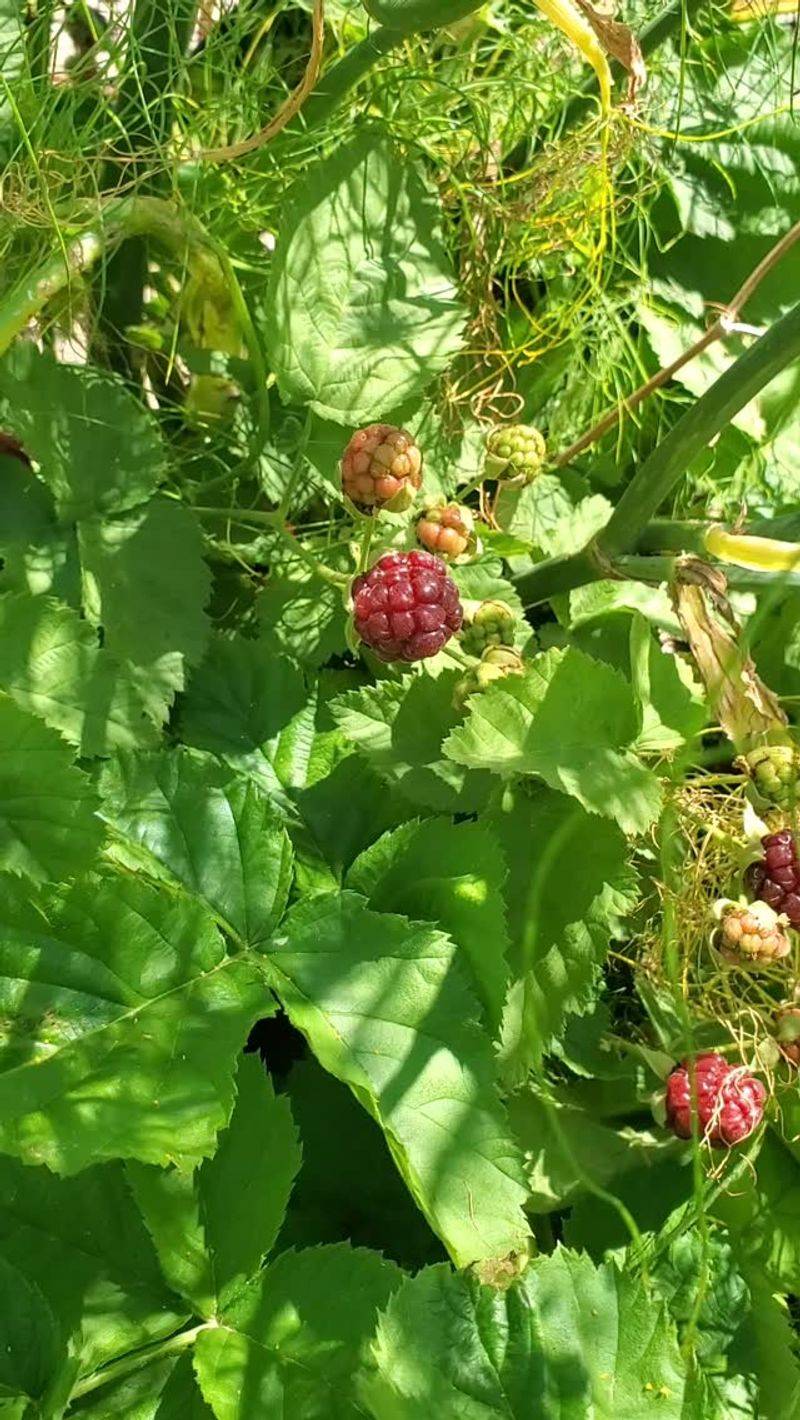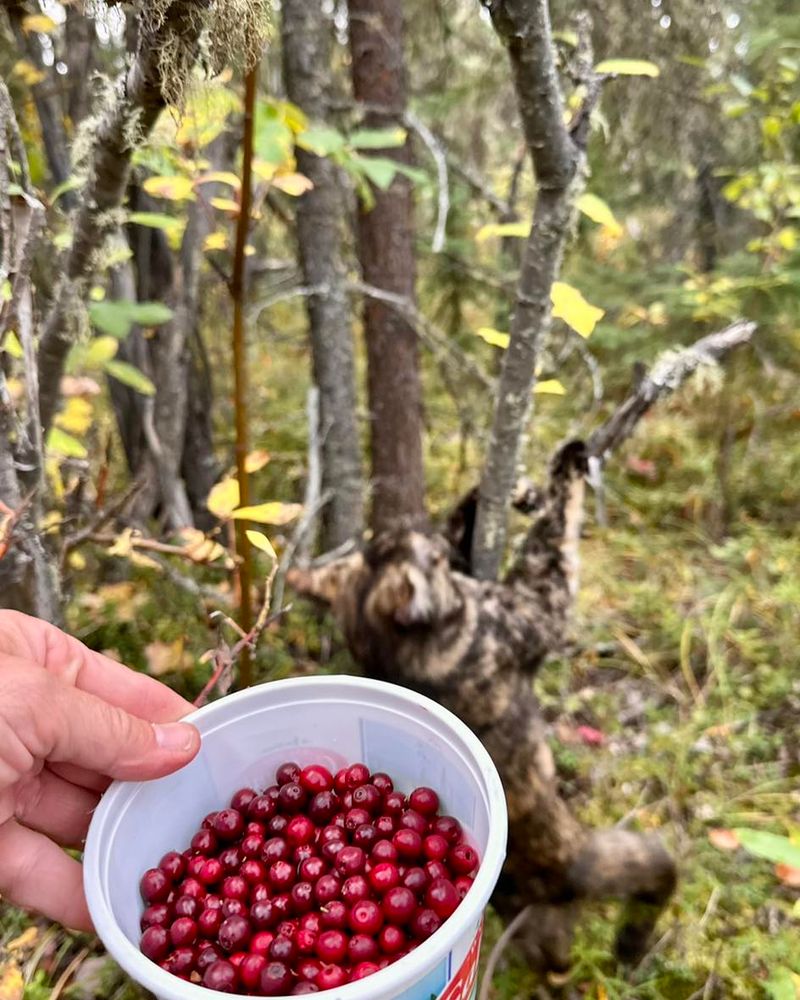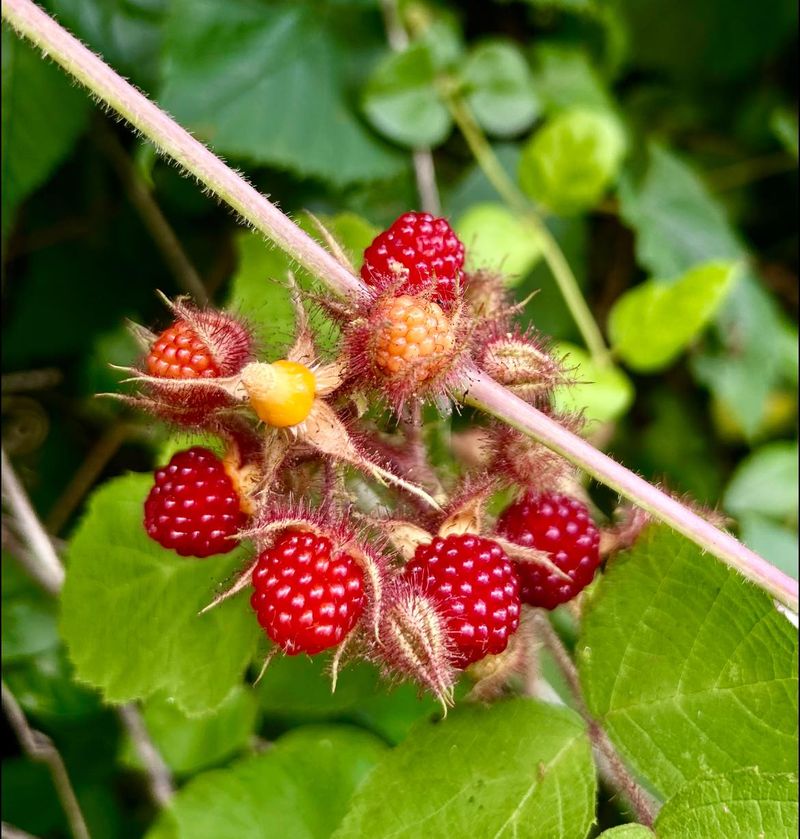I used to think blueberries were the ultimate backyard berry—until I tried growing a few others. Some of these have way more flavor, grow faster, or just give me bigger harvests with less effort.
And honestly, they’ve totally stolen the spotlight in my garden. I still love blueberries, but these other berries are the real overachievers.
If you’re ready to branch out, these might just become your new favorites too!
1. Blackberries
Looking for a berry that practically grows itself? These juicy gems establish quickly and spread with minimal effort on your part. The thorny canes can grow several feet in a single season!
Harvest begins in the second year with yields that often triple what blueberries produce in the same space. Even better, blackberries thrive in various soil types without the strict pH requirements that make blueberries so finicky.
2. Raspberries
Ready for berries in record time? Fall-bearing varieties can produce fruit in their very first year! These adaptable plants multiply through underground runners, quickly forming productive hedges without much fuss.
Unlike temperamental blueberries, raspberries tolerate partial shade and less-than-perfect soil conditions. With proper support, a small raspberry patch can yield several pounds of fruit per season, making your morning cereal infinitely more delicious.
3. Elderberries
Want a berry bush that grows like wildfire? Native elderberries can shoot up 6-8 feet in just two growing seasons! The umbrella-shaped clusters of tiny berries produce massive harvests that blueberries can’t compete with.
These powerhouse plants thrive in wet areas where other berries struggle. Though the berries require cooking before eating, they’re packed with immune-boosting compounds. One mature elderberry bush can provide enough berries for dozens of jars of homemade syrup.
4. Mulberries
Why plant when nature might provide? Check your neighborhood—mulberry trees often grow wild and produce berries by the bucketful. A single mature tree can yield up to 10 gallons of fruit annually!
Unlike fussy blueberries, mulberries require zero maintenance once established. The sweet-tart fruits resemble blackberries and drop when ripe. Simply spread a sheet beneath branches during peak season, give the trunk a gentle shake, and collect your bounty.
5. Gooseberries
Ever seen a berry bush produce fruit in dappled shade? Gooseberries laugh at conditions that make blueberries sulk. These underrated gems produce translucent fruits ranging from green to red to purple, depending on variety.
The compact bushes reach full production faster than blueberries and continue bearing for decades. Gooseberries’ natural disease resistance means less spraying and fussing. Their tart-sweet flavor makes them perfect for pies and preserves that will have your neighbors begging for recipes.
6. Currants
Imagine harvesting berries just one year after planting! Red, white, and black currants establish quickly and produce gorgeous strings of jewel-like berries that hang like tiny grape clusters from the branches.
These cold-hardy bushes thrive where blueberries struggle, surviving temperatures down to -40°F without damage. A mature currant bush produces 4-5 pounds of vitamin-rich berries annually. The tart flavor makes them perfect for jams that set beautifully without added pectin.
7. Honeyberries
Never heard of these super-early producers? Honeyberries (also called haskap) ripen weeks before blueberries, extending your harvest season dramatically. The elongated blue fruits look like stretched blueberries but grow on much hardier plants.
These Siberian natives laugh at winter temperatures that would kill blueberry bushes outright. No special soil amendments needed here—honeyberries adapt to average garden soil with minimal fuss. The sweet-tart flavor combines notes of blueberry and raspberry with a hint of honey.
8. Goji Berries
Paying premium prices for dried superfoods? Goji berries grow like weeds once established, with vining plants that can reach 8-10 feet in height! The bright red berries appear throughout summer and fall, providing months of continuous harvesting.
Unlike fussy blueberries, gojis tolerate drought and poor soil conditions with remarkable resilience. These nutritional powerhouses contain more protein than any other fruit. Fresh berries taste like a cross between cherry and cranberry—much more interesting than bland store-bought blueberries.
9. Aronia Berries
Looking for a berry that practically grows itself? Aronia (chokeberry) produces impressive harvests with minimal attention. These native North American shrubs boast beautiful white spring flowers followed by clusters of dark purple-black berries.
Drought-tolerant and pest-resistant, aronia bushes thrive where blueberries falter. Though astringent when raw, these antioxidant-packed berries make exceptional juice, wine, and jam. The fall foliage turns brilliant red, adding landscape value long after harvesting ends.
10. Serviceberries
Want berries that double as landscape showstoppers? Serviceberries (also called juneberries or saskatoons) grow into beautiful small trees reaching 15-25 feet tall. The sweet purple berries resemble blueberries but ripen earlier and grow much faster.
Spring brings spectacular white blossoms, followed by delicious berries birds love—plant extra to share! Unlike demanding blueberries, serviceberries adapt to various soil types and require virtually no special care. The almond-blueberry flavor makes them perfect for pies and preserves.
11. Jostaberries
Tired of thorny berry bushes? This gooseberry-black currant hybrid gives you the best of both worlds—thornless stems and disease-resistant growth! The dark purple berries grow larger than either parent and produce heavily after just two years.
Jostaberries tolerate partial shade and adapt to various soil types without the fussy pH requirements blueberries demand. The flavor combines black currant’s complexity with gooseberry’s sweetness. A single mature bush can produce up to 12 pounds of fruit annually.
12. Thimbleberries
Ever seen berries that practically plant themselves? Native thimbleberries spread naturally through underground runners, creating beautiful colonies of soft red fruits. The large maple-like leaves add ornamental value even when not fruiting.
Unlike demanding blueberries, thimbleberries thrive in woodland edges and partial shade. The delicate berries resemble flattened raspberries without the hollow core. Their intense flavor makes them perfect for premium jams and syrups that capture summer’s essence in every spoonful.
13. Salmonberries
Seeking berries for challenging spots? Salmonberries thrive in wet areas where blueberries would simply rot. The bright orange to red fruits resemble raspberries and grow on tall arching canes that create natural privacy screens.
These Pacific Northwest natives establish quickly in partial shade and spread to form productive patches within just 2-3 years. Birds love them, making salmonberries perfect for wildlife gardens. The unique flavor varies from bush to bush—some taste like honey while others have apple notes.
14. Cloudberries
Fancy growing something truly special? Arctic-native cloudberries produce golden amber fruits that look like orange raspberries and taste like honey-apricot nectar. They’re practically impossible to find commercially but surprisingly easy to grow in cool climates.
Unlike fussy blueberries, cloudberries naturally grow in boggy, acidic soil without amendments. The low-growing plants spread slowly but surely through underground runners. These rare berries command premium prices at farmers markets—up to $20 per pound when you can find them!
15. Boysenberries
Craving bigger berries? Boysenberries produce fruits nearly twice the size of typical blackberries! These vigorous hybrids combine the best traits of raspberry, blackberry, and loganberry into one spectacular plant that grows with remarkable speed.
The trailing canes can grow 10+ feet in a single season when properly supported. Boysenberries offer exceptional flavor depth that blueberries can’t match—wine-like richness with perfect sweet-tart balance. A small 10-foot row can yield 10-15 pounds of fruit annually.
16. Lingonberries
Need berries that thrive in poor soil? Lingonberries create beautiful evergreen groundcover that produces bright red berries twice yearly in many climates! These Scandinavian favorites grow where blueberries struggle, especially in cooler regions.
The low-maintenance plants spread slowly through underground runners, eventually forming dense mats covered with glossy berries. Unlike most fruits, lingonberries hold perfectly on the plant for weeks without spoiling. Their distinctive tart flavor makes them perfect for traditional preserves paired with hearty meats.
17. Wineberries
Want berries that practically grow themselves? Asian wineberries establish rapidly and produce distinctive orange-red fruits encased in fuzzy calyxes that peel back when ripe. The arching canes create beautiful garden structures without careful training.
These vigorous plants thrive in partial shade where blueberries struggle and require zero soil amendments. The translucent berries have a unique wine-like flavor with perfect natural sweetness. Best of all, their slightly later ripening extends your berry season when other varieties finish.

